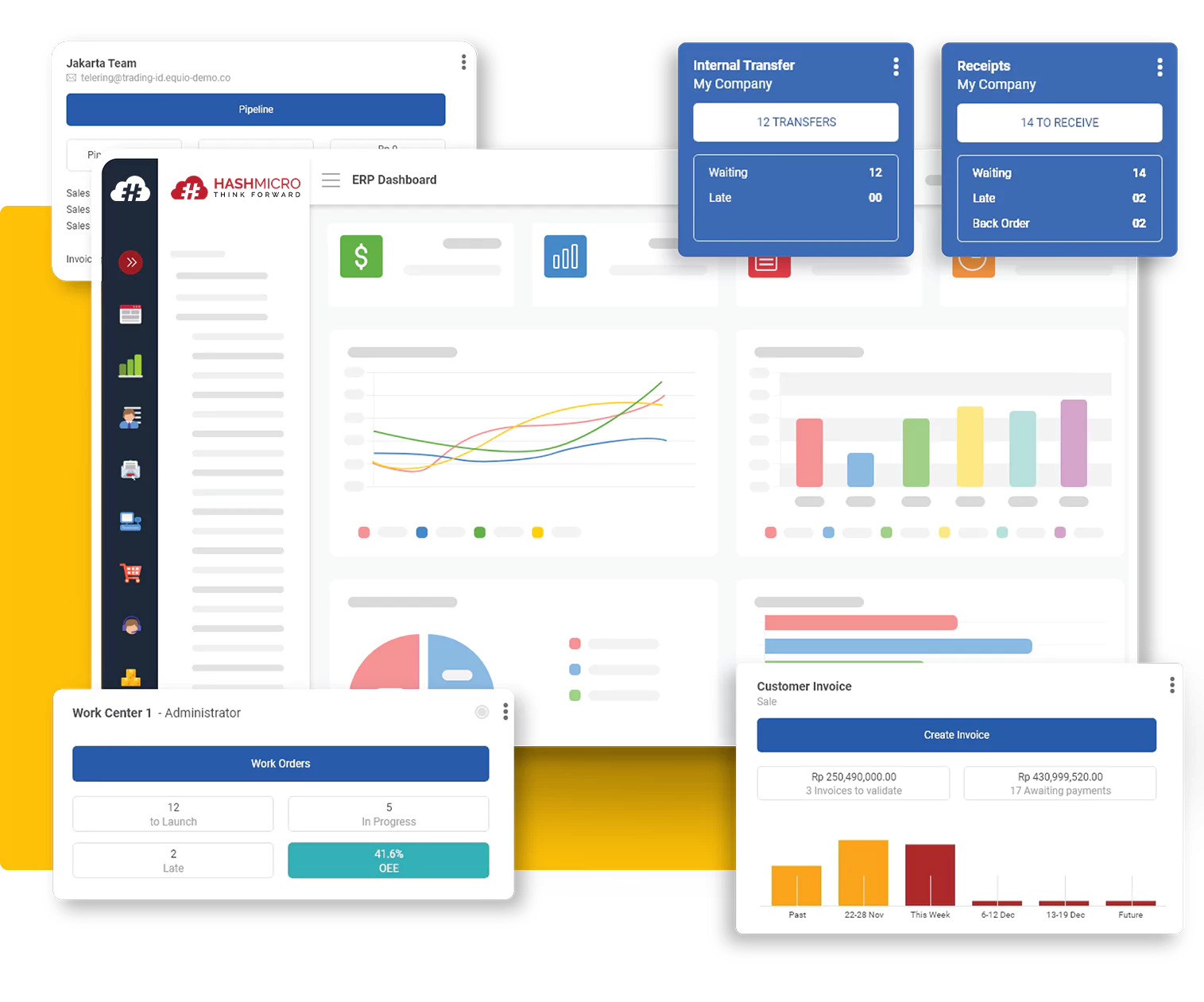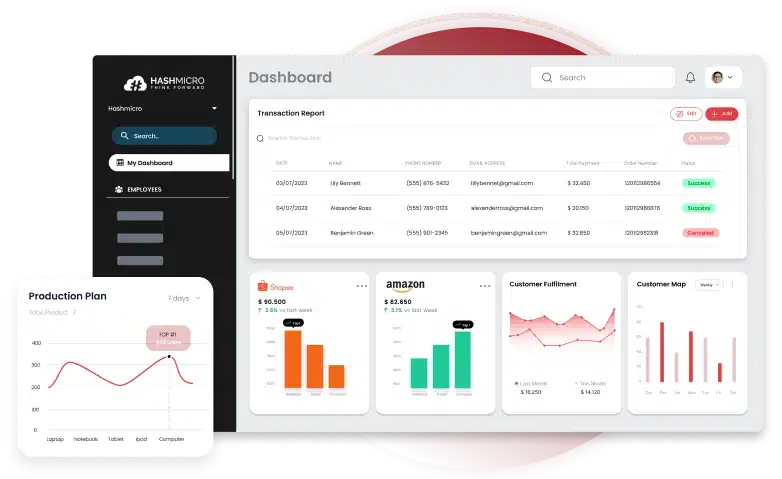When I first walked through our warehouse, I noticed a strange silence. Boxes were sitting untouched on the shelves, collecting dust instead of generating revenue. Somewhere between the purchase order and the point of sale, the momentum of our sales had stalled.
That’s when I decided to implement Wholesale ERP Software. Suddenly, our operations weren’t static anymore; they became dynamic, adjusting to demand in real time. Data flowed seamlessly, and decision-making became faster and more precise.
By treating product feeds not as spreadsheets but as actionable signals, everything changed. Orders moved smoothly, inventory was optimized, and our warehouse finally started humming with efficiency.
Key Takeaways
|
Feeds Are Not Flyers: Why Static Product Feeds Are Killing Performance
The traditional feed is like a catalog left behind on a table. It waits. It’s unchanged. It assumes yesterday’s stock still reflects today’s situation. In reality, demand never stays still, and the inventory behind that demand is constantly shifting.
The result? Listings stay live for items that are out of stock. Sales teams push products already at dangerously low inventory levels. High-velocity items don’t get priority exposure, and promotions are based on guesses instead of live metrics.
Buyers, especially in B2B environments, don’t have the patience to chase down accurate information. They expect real-time accuracy—stock that matches the listing, prices that make sense, and descriptions that evolve based on what’s selling and what’s not.
This is more than just a technology problem. It’s a mindset problem. Too many wholesalers treat feeds like paperwork instead of performance tools. What you need isn’t another catalog. You need a feed that breathes.
The ERP Layer: Turning Inventory Into Intelligence

Modern ERP systems have gone far beyond managing orders and invoices. Implementing an ERP system with robust inventory management benefits can significantly enhance operational efficiency. The best of them transform raw data into live signals.
A well-integrated ERP doesn’t just know what’s in the warehouse; it understands what’s moving, what’s stalling, and what might fly off the shelves tomorrow if placed in the right spotlight.
Channel Awareness and Responsive Logic
Think about your best-selling item. Now imagine your ERP automatically pushing that item to the top of your feed based on its sales velocity over the past week. Imagine it lowering the exposure of a product nearing backorder status or swapping out SKUs in a flash when thresholds dip.
A smart ERP setup can segment feeds by channel. What performs on one platform may not resonate on another. An ERP can push different product variants to different buyers, customize pricing levels, and even flag new opportunities before the sales team notices the trend.
This kind of feed intelligence isn’t flashy. It’s quiet. It happens in the background. But over time, it results in a feed that adjusts itself in response to actual business conditions. Instead of reacting, you’re preempting.
Sales Velocity as the Signal: Adapting Listings in Real-Time
Sales velocity is the single most honest metric in wholesale. It cuts through noise. If a product is flying out the door, something about it is working. If it’s gathering dust, something isn’t.
ERP systems equipped to monitor and respond to sales velocity don’t just store this data—they act on it. Insights from how AI and automation in ERP systems expand analytics capabilities also point to how these systems empower businesses to adapt listings dynamically.
Understanding how listings connect to performance starts with understanding sales pipeline stages in CRM, which helps align your inventory strategy with real buyer behavior. Listings for high-velocity products get promoted or bundled with related items.
Marketing Triggers and Inventory Balance
Establishing precise reorder points is crucial for maintaining inventory balance. By defining reorder points based on sales velocity, businesses can ensure timely replenishment and prevent stockouts.
The beauty lies in subtlety. You’re not rewriting your catalog every week. You’re allowing it to breathe based on demand. Sales data isn’t something to analyze later; it’s something to act on now.
Leveraging inbound marketing tools for content creation can further enhance these promotional efforts, ensuring that marketing campaigns are both timely and relevant to current inventory levels.
A few ERP platforms even allow sales thresholds to connect directly to marketing rules. When a product hits a surge, email campaigns can auto-fire. When inventory dips, the feed adjusts to de-prioritize that item.
This kind of real-time adaptability turns your product feed into a strategic asset. One that evolves in sync with the market, without daily human babysitting.
When Demand Shifts, Feeds Should Too

Imagine your ERP as a weather station. It doesn’t just track current conditions; it predicts storms. Demand shifts happen fast—a supplier delay, a seasonal spike, a viral moment. Static feeds stay blind to these changes, but ERP-backed feeds can pivot.
Let’s say a sudden run on a particular item happens. As explored in how ERP platforms handle disruptions in supply chains, smart systems can reconfigure sourcing, timing, and listing priorities quickly to adapt.
The ERP notes the spike, adjusts the feed to spotlight complementary products, and pulls back on listings for stock that might sell out. Or, in the opposite scenario, if sales of an expected hit are flat, the ERP can reconfigure the feed to support a discount campaign.
This doesn’t mean constant feed churn. It means curated motion. Controlled adaptability. ERP allows wholesalers to hold the reins without needing to manually update listings hour by hour.
Leveraging inventory control best practices can further support these responsive adjustments and stabilize operations through demand swings. And because these updates are based on internal performance data, they’re more trustworthy than third-party tools scraping market trends.
Here is a table summary that discusses when demand shifts, feeds should too
| Description | |
| Demand Spike | ERP adjusts sourcing and listings to meet sudden demand. |
| Low Stock | System reduces exposure of near-empty items and promotes alternatives. |
| Data Reliability | Uses internal performance data instead of third-party sources. |
| Controlled Adaptability | This system ensures smart, data-based feed updates without manual effort. |
| Slow Sales | ERP triggers discount or bundle campaigns automatically. |
How Smart Wholesalers are Already Doing It
Many wholesalers are quietly winning by making their ERP systems do the heavy lifting. They build rules into the system that reflect the logic their best salespeople use instinctively.
Slow movers get attention or exit paths. Listings shift slightly across channels depending on customer behavior. And sometimes, the ERP makes the call to pause a product altogether until stock or interest rebounds.
Experimentation and Learning From the Feed
Some businesses go a step further. They use ERP systems to conduct micro-tests, like showing slightly different bundles to buyers in different regions or experimenting with alternate descriptions for the same SKU.
Over time, they learn what language works best, what pairing increases order size, and how seasonal rhythms affect different customer segments. The feed becomes not just responsive, but also educational—an ongoing test of what sells and why.
First Steps for the Curious
For wholesalers looking to get started with this approach, here are a few suggestions to move from theory to practice:
- Audit your current product feeds: Identify listings that haven’t changed in months and cross-check them with sales and inventory data.
- Establish ERP-based triggers: Set rules that promote, demote, or pause listings based on stock thresholds, sales rates, or order frequency.
- Segment feed logic by sales channel: Tailor the data structure and content to the behavior of buyers on each platform.
- Schedule time to download your shopping feed data: Use it to uncover inconsistencies, missed opportunities, or outliers.
- Link feeds to marketing touchpoints: Enable ERP conditions to dynamically trigger email campaigns, retargeting ads, or discount offers.
These steps don’t require massive investments: just curiosity, consistency, and the willingness to let your ERP guide the rhythm of your feed.
Streamline Your Wholesale Operations with HashMicro’s Wholesale Software
HashMicro’s Wholesale Software provides a complete solution to streamline and automate wholesale operations. This software helps businesses manage inventory efficiently and optimize purchasing and sales processes.
provides a complete solution to streamline and automate wholesale operations. This software helps businesses manage inventory efficiently and optimize purchasing and sales processes.
The system also offers flexibility to adapt workflows according to each company’s structure and business model. With customizable features, wholesalers can gain better visibility, improve accuracy, and accelerate decision-making through real-time insights.
Here are the key features of HashMicro’s Wholesale System that enhance your wholesale operations:
- Automated Inventory Management: Track stock levels, reorder points, and warehouse movements in real time to prevent overstocking or shortages.
- Integrated Sales & Purchasing: Streamline purchase orders, quotations, and invoices with automated approval and documentation.
- Customer & Supplier Management: Maintain strong relationships through centralized data, communication tracking, and transaction history.
- Comprehensive Reporting: Access detailed sales, purchasing, and financial reports for data-driven business strategies.
Conclusion
Managing a wholesale business isn’t just about keeping products in stock; it’s about keeping them moving. Outdated systems can slow that momentum, creating inefficiencies that impact your bottom line.
With HashMicro’s Wholesale Software, you can turn static operations into a seamless flow. The system integrates every aspect of your business, from inventory and sales to finance and analytics, giving you real-time insights that drive more intelligent decisions.
Don’t wait until inefficiencies cost you growth. Streamline your wholesale operations today and experience how the right ERP system can boost sales, efficiency, and profitability. Try the free demo now!
Frequently Asked Questions
-
What makes a wholesaler “smart”?
A smart wholesaler leverages data and technology to make proactive business decisions. Instead of relying on manual tracking, they use systems like ERP software to monitor inventory, sales trends, and customer demand in real time
-
How can ERP software help wholesalers become smarter?
ERP software centralizes operations, from inventory management to finance, allowing wholesalers to automate routine tasks, reduce errors, and respond quickly to market changes. This leads to faster turnover, higher accuracy, and better customer satisfaction.
-
Why should wholesalers switch to a smart system now?
In today’s competitive market, efficiency is everything. Smart wholesalers use digital tools to stay agile, cut costs, and maintain an edge.















